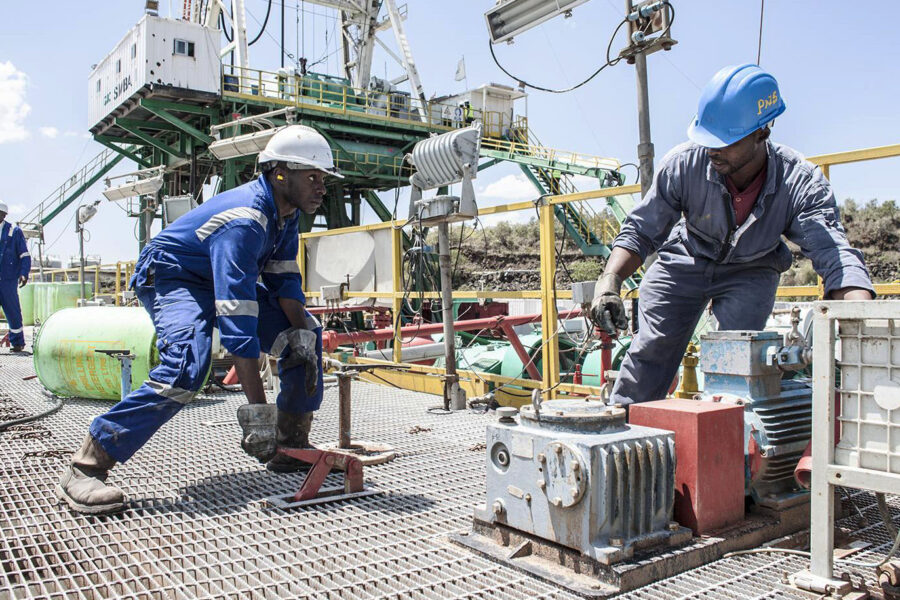Achieving the just transition to a sustainable future
The phasing out of fossil fuels must be fair to all, including those communities dependent on polluting industries. Yet policies to achieve this ‘just transition’ remain weak and scattered. What must governments do to strengthen them?
Climate — Global, US and Canada

Considered as a full package, the Sustainable Development Goals (SDGs) establish a powerful and broadly unified program for raising average global living standards, reducing poverty, and protecting the environment. At the same time, some tensions do inevitably arise in advancing these combined purposes of the SDGs. It is critical that we recognize where these tensions exist since it is the only way through which we can resolve them effectively.
One crucial area in which unavoidable tension arises is with the massive global industrial transition in the world’s energy system that must occur so that the global economy can move onto a viable climate stabilization path. This issue lies at the heart of at least four of the goals, including SDG 7 (affordable and clean energy), SDG 8 (decent work and economic growth), SDG 9 (industry, innovation, and infrastructure) and SDG 13 (climate action). The new energy system must be highly efficient and powered by clean renewable sources, primarily solar and wind power. This is because, on a global scale, roughly 70% of all carbon dioxide (CO2) emissions come from burning oil, coal, and natural gas to produce energy. Reducing these CO2 emissions, in turn, is the most critical factor in addressing climate change.
The economic rewards for the transition to a sustainable energy system are overwhelmingly persuasive. The investments that will be needed to build a global clean energy system (averaging about 2.5% of global gross domestic product (GDP) per year until 2050) will be a major engine of job creation throughout all regions of the world. On average, these investments will generate in the range of 160 million jobs that will be sustained throughout the 30-year transition period. This amounts to about two to three times more jobs than if we continued to invest in maintaining our existing fossil fuel-dominant energy system.
However, what is frequently overlooked is the scale of disruption and economic loss that will be inflicted on certain parts of society. To take effective action on climate stabilization, the global economy’s currently fossil fuel-dominant energy system needs to be phased out completely over the next 20 to 30 years. Worldwide, the fossil fuel energy system employs approximately 40 million people. Without intervention, the transition will act counter to the SDGs, creating winners and losers, and heightening inequality.
Workers and communities throughout the world whose livelihoods depend on the production of oil, coal, and natural gas, will, without question, lose out in this clean energy transition if we do not manage to create a just transition for them. It is not an exaggeration to say that the fate of the planet depends on it. This is not purely a matter of doing what is right and fair, it is pragmatic and necessary to facilitate the transition. Without such programs, the workers and communities facing retrenchment from the global fossil fuel phase-out will fight to defend their communities and livelihoods. This in turn will create dangerous delays in advancing effective climate stabilization policies.
What support is needed?
One approach to mitigate the harm and smooth the transition is to focus on direct support for the workers impacted. Consider the US economy. Recent work that I have done with co-authors estimates that the rough average costs of a just transition program for displaced workers would be a relatively modest USD 3.1 billion per year. That is less than 0.01% of the likely average US GDP from 2021 to 2050. This level of funding would provide strong support in two areas:
- guaranteeing both pensions and new jobs, at pay levels equal to their fossil fuel jobs, for laid-off workers
- high-quality retraining and relocation support as needed
Of course, other countries will need to mount comparable programs.
The second, equally critical, area for just transition in the global energy industry is reinvestment and general support for communities that are, at present, heavily dependent on the fossil fuel industry. These communities will face formidable challenges adapting to the fossil fuel industry’s decline. One obvious set of projects would be to clean up and reclaim the land surrounding abandoned coal mines as well as oil and gas production sites.
Another is land repurposing. A prominent case of successful repurposing has been the experience in Germany’s Ruhr Valley, the traditional home for Germany’s coal, steel, and chemical industries. Since the 1990s, the region has advanced industrial policies to develop new clean energy industries. As one important example of this repurposing project in the Ruhr region, RAG AG, a German coal-mining firm, is in the process of converting its Prosper-Haniel coal mine into a 200-megawatt pumped-storage hydroelectric reservoir that acts like a giant battery. The capacity is enough to power more than 400,000 homes in North Rhine-Westphalia. This example shows that political will, together with strict regulations, can put in place feasible transitions, even in fossil fuel hotspots.
Execution is everything
Recognition that governments must support industrial transition and committing investment is not enough in itself. Successful programs of this kind are rare. For decades, the much more common experience, both in the energy industry and more generally, has been transition programs that have been largely ineffective in delivering meaningful results for impacted workers and communities.
In the US the Trade Adjustment Assistance (TAA) program, which was first enacted in 1962, is a conspicuous example. The purpose of the TAA, as its name implies, is to assist US workers whose jobs have been displaced due to rising import competition. The TAA is designed to provide extended unemployment insurance benefits, supplemental income for displaced workers moving into lower-paying jobs, retraining support, health benefits, and allowances for job searches and relocation. In reality only a small minority of workers who lost jobs in manufacturing received support from the program; most had to rely on Social Security and disability benefits.
On a global scale, a 2017 study by the Organization for Economic Co-operation and Development’s Just Transition Centre concludes by emphasizing that, to date, only minimal progress has been achieved in implementing successful transition policies in the energy industry and other high CO2-emitting sectors, such as cement. The study emphasizes the “absence of appropriate government policies, funds, and structures for just transition.” It argues that “without more assertive and coherent action from governments, we risk seeing many more examples of transition that do not deliver justice, resulting in stranded workers and communities.”
Making the commitment
Germany’s successful transition in the Ruhr Valley resulted because policymakers were committed to providing sufficient resources to support the project. Government policies delivered in supporting workers with income supplements, retraining opportunities and active assistance in finding new job opportunities. Government policies also provided significant financial subsidies for private clean energy investors. Without significant subsidies, many, if not most, of the Ruhr Valley’s major clean energy projects would have entailed excessive costs or risks for private investors. What should therefore be clear is that just transition policies for both workers and communities need to be recognized as a first-order policy priority on a global scale – including commitments of adequate financial resources to support these policies – in order for the SDGs to fully deliver on their enormous promise.





